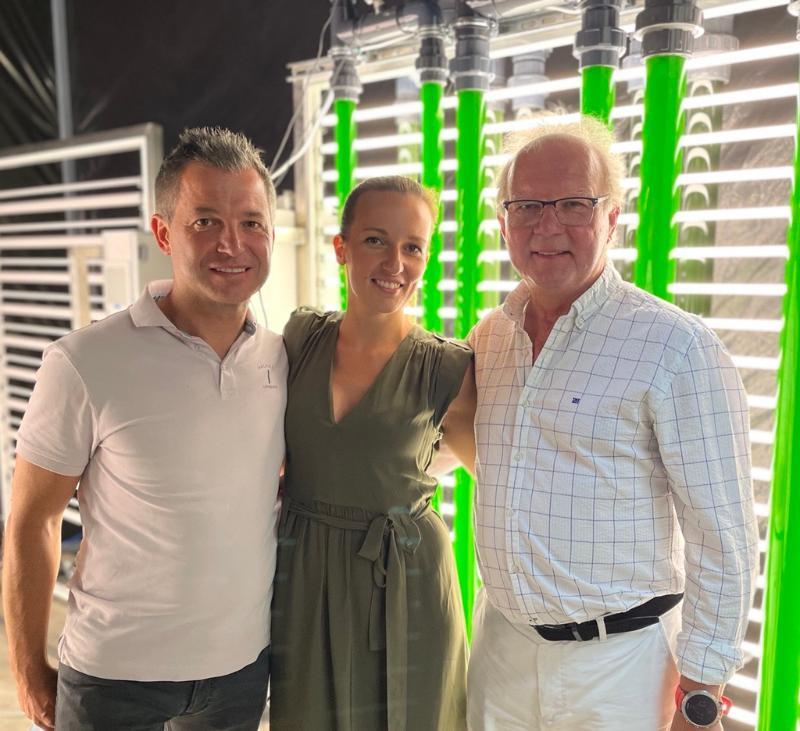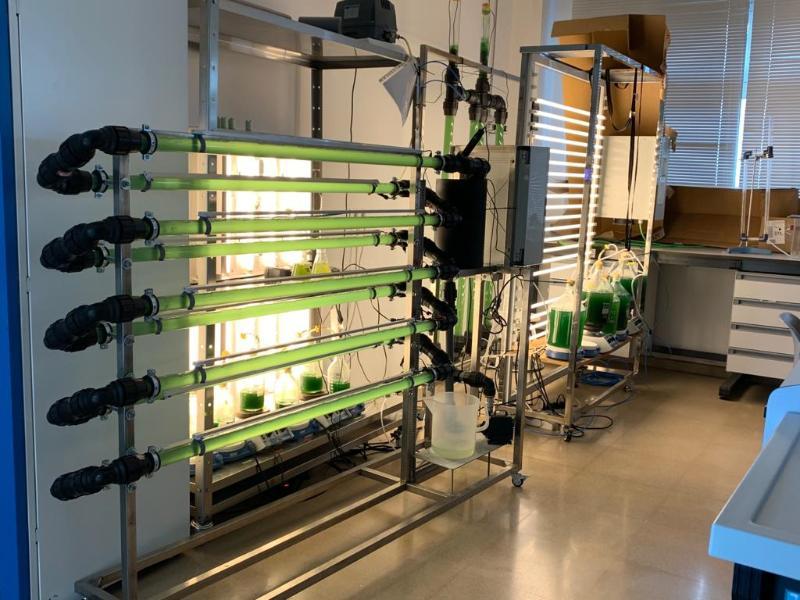Finding sunscreen that is safe for humans and the environment is a tough task. One solution is a 2-billion-year-old bacteria that can be used to offer intensive environment sustainable sun protection.
The story of UVera begins about 2 billion years ago.
At that time, the Earth had no atmosphere and no protection from the sun’s radiation. Among the few living things in that period were cyanobacteria, the first microorganisms to exhale oxygen and to develop a unique form of protection against sunrays.
Several eons later, UVera, a young Polish-Spanish company, realised that the solution to a very big problem — finding a molecule to serve as a sunscreen that would be harmless to the environment and humans — was hidden in these amazing and ancient lifeforms, which still exist.
“It’s quite comfortable working with a product that was created by evolution because we are not working with something synthetic,” says Adam Kiciak, UVera’s chief medical officer and a co-founder. “Over millions of years, nature produced an ideal product.”
Three experts and one special sunscreen
The idea for UVera and its sunscreen product originated in conversations among three founders, including a Polish-Spanish scientist Jacek Wierzchos, who is an expert on microorganisms in extreme environments. Wierzchos had been doing research with the American space agency NASA on the possibility of extra-terrestrial life. He was aware that some of the properties of the cyanobacteria he was studying could have a variety of benefits. Magdalena Jander, the company’s chief executive officer and another co-founder, who has a PhD in biotechnology, was leading several life-science projects with commercial applications. The third founder, Kiciak, is a medical doctor with experience in the pharmaceutical industry. When they got together, the results of their work were out of this world.
“Without that kind of synergy, we wouldn’t be able to create this project, or follow it through,” Magdalena says.

From left, Adam Kiciak, chief medical officer of UVera; Magdalena Jander, chief executive of the company; and Jacek Wierzchos, a specialist in microorganisms in extreme environments.
One thing UVera did that is special is the isolation of the molecule that serves as a particular kind of cyanobacteria’s protection against the sun, and then it developed a system to produce the product in large quantities.
No climate or health problems
This sunscreen innovation addresses a couple of big problems. All sunscreens are either chemical, with properties that can hurt aquatic life and human health, or physical, using the minerals titanium dioxide and/or zinc oxide to deflect the sun’s rays. The mineral versions also have environmental drawbacks. The prospect of a sunscreen without environmental or health issues has big appeal for cosmetic companies.
“Almost one billion bottles of sunscreen are sold each year,” Magdalena says, “and the market is only going to grow.” UVera’s product would fulfil “the needs of the cosmetic companies without having to change consumer habits.”
UVera was a finalist in the 2021 Social Innovation Tournament. The contest was created by the EIB Institute to support entrepreneurs who are helping the environment and society. UVera has won numerous honours and grants, including funding from the European Union’s Horizon 2020 research and innovation programme and the Health Catapult Award from the European Institute of Innovation and Technology
Today, UVera is producing the molecule that acts as a UV screen in small amounts, and the company is testing it in various formulations with some cosmetic companies. Rather than focusing on manufacturing, UVera is spending more time on research and development, while licensing the molecule to many cosmetic companies. To create larger amounts of its product, UVera is building a pilot factory where it will cultivate the cyanobacteria and extract the molecules that serve as sunscreen protectors.

An UVera workplace that cultivates cyanobacteria and extracts the molecules that serve as sunscreen protectors.
Adam, the medical officer, says tests indicate that the substance is safe for humans, and the molecule doesn’t penetrate the deeper layers of skin. Nor does it create allergic reactions. The company plans clinical trials next year and hopes to have the product on the market by the end of 2022.
UVera believes the molecule may have other applications. For example, because it is so resistant to high temperatures, it could replace titanium dioxide as a UV screen in the paint used by the space industry.
But the focus today is on protecting human skin —and the environment.
“It only takes a tiny amount of our molecule in a sunscreen” to highly protect the skin, Magdalena says. “At that level, we could reduce the amount of sunscreen waste in the oceans by 99 percent by our calculations.”
